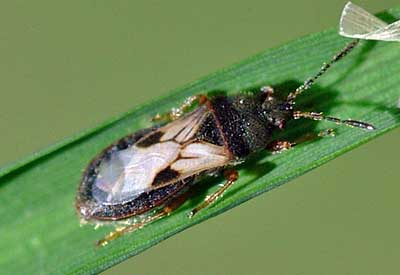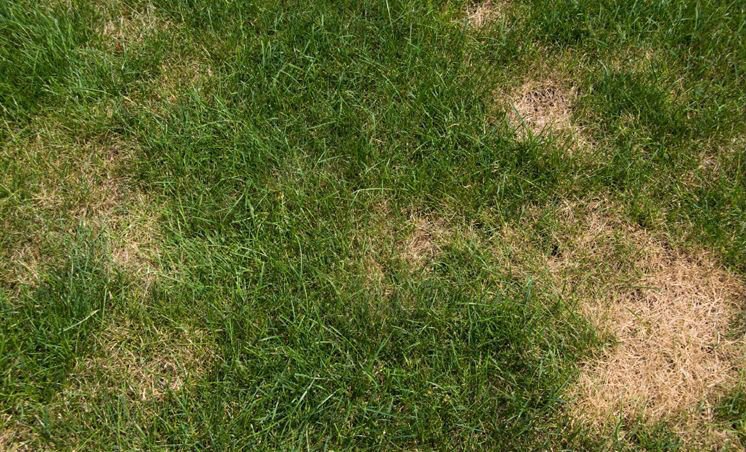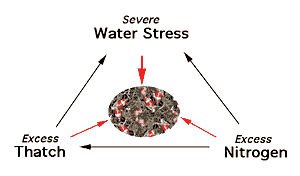
Chinch bugs will suck the life out of your lawn—literally. These pests suck juices from plant tissue while injecting chemicals, clogging the vascular system of plants. A yellow halo around damaged areas is typical of chinch bug infestation. In spite of record temperatures during our recent heat wave, don’t assume that temperature alone is responsible for any irregularities in your lawn; it could be these guys.
WHAT WE KNOW
- The irregular yellow patches of turf eventually turn reddish brown and die while the chinch bugs move outward into healthy turf.
- Sunny areas with heat or drought-stressed grass, often near pavement or sidewalks, is where we first see chinch bugs damage.
- Infestation commonly occurs from June to September (although weather can extend this period).
- Adult chinch bugs are black with white wings and are about 3mm in length. Their development is temperature dependent—eggs may require as little as one week to hatch during the summer and more than one month during the spring.

WHAT WE CAN DO
- Chinch bug populations can be controlled by ensuring that your turf receives adequate amounts of water during the summer months, and by minimizing thatch buildup through aeration.
- Turf exhibiting drought or heat-stress symptoms should be visually inspected.
- Affected areas should be treated with a granular insecticide.
- Damage continues to appear for one or two weeks after an insecticide application has stopped chinch bug feeding.
- Early detection is key.

|
The major factors that make lawns susceptible to chinch bug attack are severe water stress, excess thatch and excess nitrogen. Sustainable, pesticide-free control of chinch involves managing these cultural conditions to improve grass health and resistance to chinch bug (and other pests). |
